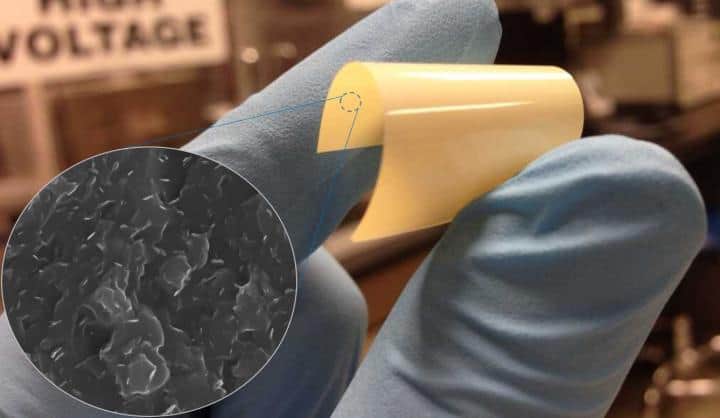A low-cost, flexible polymer that can tolerate high temperatures could provide energy storage in electric vehicles, according to researchers from Penn State University in Pennsylvania. The polymer is a composite whose key ingredient, boron nitride, allows it to withstand temperatures up to 248°C under application of high voltages.
The composite is a dielectric substance; that is, it stores electric charge when exposed to an electric field. In electric vehicles, they are used to release current quickly for start-up, or to convert DC from batteries into AC to run an electric motor.

Generally, high-temperature applications require ceramic dielectrics, but these are heavy and brittle, according to Penn State professor of materials science and engineering, Qing Wang, who led the research. Polymer dielectrics are lighter, but have tended to degrade in performance or melt at high temperatures, necessitating a cooling system, which adds further weight and complexity.
Wang and his team used boron nitride, a two-dimensional substance similar in structure to graphene which has been shown to have dielectric properties, in the form of ‘nanosheets’ about 2nm thick and 400nm across as the active agent in a cross-linked polymer nanocomposite with benzenecyclobutene, a polymer used in electronics. The composite can be made by just mixing the boron nitride and the polymer precursor, then curing with heat or light to create the cross-linked structure. Because the nanosheets are so small, the polymer remains flexible. The team claims in a paper in Nature that the polymer can be photo-patterned and have “outstanding high-voltage capacitative energy storage capabilities at record temperatures,” with electrical conduction several orders of magnitude lower than existing polymers; the boron nitride dissipates heat. The dielectric properties remain after the several bending cycles, the team adds.
Other applications for the polymer include energy storage in aerospace power electronics and underground oil and gas exploration equipment. “Our next step is to try to make this material in large scale and put it into a real application,” said Wang. “Theoretically, there is no exact scalability limit.”




Poll: Should the UK’s railways be renationalised?
I think that a network inclusive of the vehicles on it would make sense. However it remains to be seen if there is any plan for it to be for the...